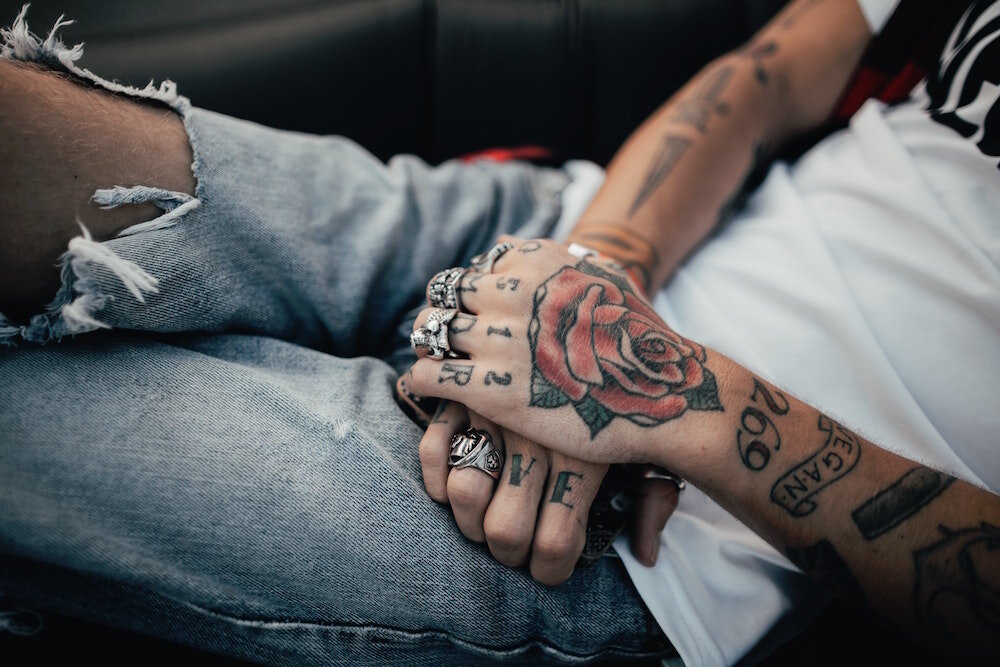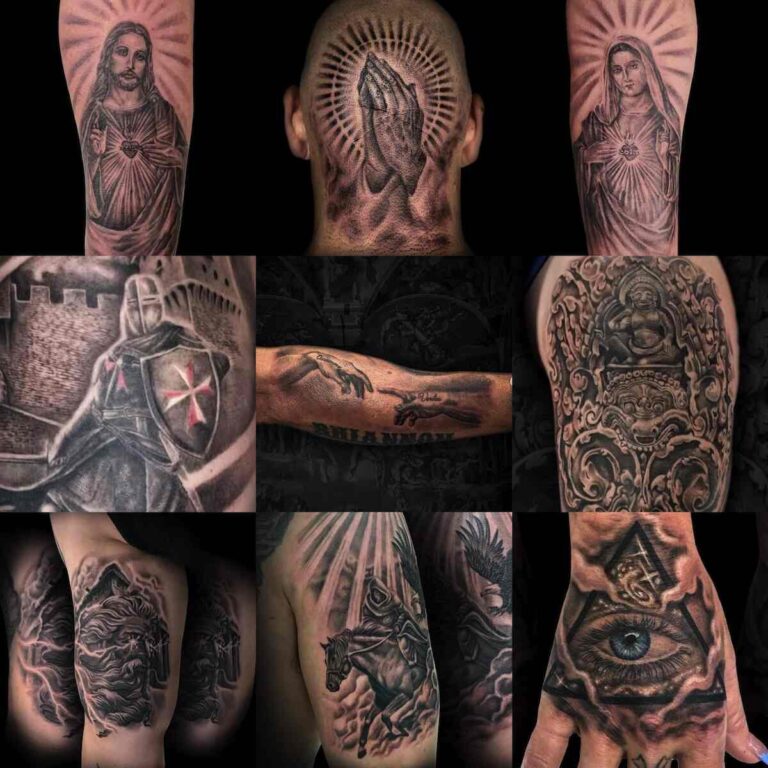
Well yes, of course. If there’s skin you can tattoo it. However, we’re not just going to answer in the affirmative and leave you hanging. Since you asked the question “Can you tattoo your knuckles” we can infer that you’re clearly curious about all that is involved. Below is a breakdown of everything that you need to know.
What You Need to Know About Getting Your Knuckles Tattooed Before Booking Your Appointment
Knuckles Defined (and why you should care)
By medical definition, your knuckles are the rounded prominence formed by the ends of the two adjacent bones at your finger joints. The first (when viewing the hand from your POV) knuckle is the largest, and found at the junction between the hand and the fingers which is also known as the metacarpophalangeal joint (MCP). The other knuckle is found towards the tips of your fingers, and it is known as the proximal inter-phalangeal joint (PIP). Why is it important to define exactly what the knuckles are? If you want to know about possible complications it’s important to clarify the difference between them and the rest of your fingers. If you’re instead referencing the space on your fingers between the MCP and PIP or between the PIP and your fingernail, then you’re actually considering a less complicated (for tattooing) zone. Unlike the knuckle, they don’t bend nor come is as frequent contact with elements. View more about where to get a finger tattoo. If you truly do want a tattoo on your knuckles – keep reading.
What Kind of Pain to Expect
With the definition of knuckles out of the way, we can now address your potential concerns, namely pain. There are a total of 27 bones in the wrist and hand and they are all interconnected when it comes to pain receptors. The hand is comprised by three primary nerves (median, ulnar, and radial nerves) each of which has sensory and motor components. Within this there are thousands of densely packed nerve endings. In addition, finger and knuckle skin is in the 0.25–0.93 mm range which means it’s thin and therefore more vulnerable to pain.
Simply put, if you’re going to a knuckle tattoo, accept the fact that it’s going to hurt quite a bit. Think about how this will impact your ability to sit for the session. Your hands and fingers can’t “jump” or jerk-back from their resting position if you want the tattooist to maintain a steady line. Give careful thought as to what you can handle, and speak to your tattooist about the concern and to discuss what can be done.
It’s also worth noting that the index finger (between thumb and middle finger) is typically the most sensitive on the hand, and so is the index finger’s two knuckles. If you want a tattoo on just one knuckle, opt for the middle or ring finger.
What About the Bend?
Does the skin on our knuckles wrinkle-up to form skin folds? Most likely. The deeper the fold the harder it will be to tattoo a clean design. As a result you must consider how detailed and fine you want the design to be. Either way, the tattooist will need to stretch the skin at the knuckles to “remove” the fold, so once again you must understand the importance of keeping your hand completely still. Depending on what the design is, you may need to slightly bend your fingers when getting tattooed to reduce fold. This can be complicated for anyone who experiences chronic pain in the hands due to carpal tunnel syndrome (etc.). If this is you, you may want to rethink placement.
Aftercare is Super Important
We know you may not be a boxer or MMA fighter, but your knuckles still come into contact with many things on a day to day basis. Aftercare is therefore extremely important. Avoid activities that require person-to-person or equipment/surface contact with your outer hand. This includes basketball, hockey, football, racket sports, and of course martial arts. This ain’t the time to join Cobra Kai!
Be sure to follow your tattooist’s aftercare instructions to the word, including advice about moisturizing and washing and what substances (chemical-based ointments, etc.) to avoid. Since your hands are exposed in the sun every day (when sunny) be sure to also use SPF 60 on the outer part of your hands. The latter is often an after thought, but when it comes to a knuckle tattoo it must be on the tip of your tongue at all times. Also avoid sticking your hands in tight pockets for four weeks after getting the knuckle tattoo, as that adds friction which can impact healing.
Ready to get your knuckle/s tattooed? If located in the Greater Vancouver BC or Toronto ON are book a consultation at an Adrenaline Studios near you.


